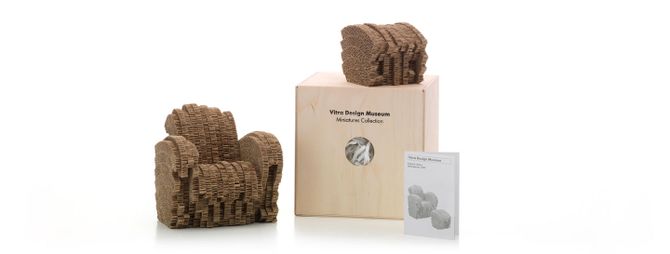製品チェアラウンジチェアソファオフィスチェアシェーズロングスツール・ベンチ彫刻的家具ミーティングチェアエアポートベンチ収納システム家具テーブルカフェテーブルローテーブルデスクデスクシステムミーティングテーブル照明時計オブジェコートラック・壁付け棚トレー・ボウル・カップ新作ベストセラーカラー & マテリアルVitra Online Shop →アレキサンダー・ジラードアントニオ・チッテリオバーバー・オズガビーチャールズ & レイ・イームズジョージ・ネルソンヘラ・ヨンゲリウスイサム・ノグチラウンジチェア ファインダーギフト ファインダーオフィスチェア ファインダー修理・メンテナンススペアパーツお手入れ方法製品保証プログラムVitra Circle StoresMynt: sit differentlyAntony Limited Edition 2025事例リビングルームダイニングルームホームオフィスキッズルームアウトドアホーム ストーリーARシミュレーションカラー & マテリアルHome Selectionワークスペースフォーカスミーティングワークショップクラブ オフィスシティズン オフィススタジオ オフィスダイナミック スペースホスピタリティ空港教育施設コワーキング医療施設クライアント事例Destination WorkplaceA case for classicsオフィスチェアDancing Officeホーム ストーリーThe Home Selection fabrics from Kvadrat and DedarARシミュレーションSchool of Design: Showcase work and knowledgeA case for classicsカラー & マテリアルAn open house An office landscape - without walls or partitionsHigh comfort of low energyA leading space for a leading art collegeサービス修理・メンテナンスお手入れ方法製品保証プログラムお問い合わせ組立・取扱説明書コンサルティング & プランニングVitra Circle StoresConsulting & planning in the VitraHausInstructionsOutdoor care instructionsRepair, maintenance, overhaul at the Vitra Circle Store Campus プロ向けCAD データ製品情報証明書サステイナビリティ レポート組立・取扱説明書環境情報pConプランニング例カラー & マテリアル証明書Home Selectionディーラー専用サイトクライアント事例MyntDestination Workplace: Visit our clients and partnersAnagram SofaMikadoTyde 2 on castorsACXDancing Officeオフィスチェアマガジンストーリーインタビュー展覧会デザイナープロジェクト ヴィトラA Capsule in TimeSeeing the forest for the treesRefining a classicMynt is a lifetime achievement to meまるでタイポグラフィのようなV-Foamデザインアイコンたち人と人を繋ぐオフィスLet there be light!ソーシャル シーティングJust Do It!EVER GREENWhy the Eames La Fonda Chair was designedWhen a Sofa is more than just a Sofa: Anagram100% ヴァージンウール – 100% リサイクル可能アーカイブはまるでタイムカプセル「ヴィトラハウス」ロフト - サビーネ・マルセリスとの対話1000 m2 の家具おもちゃから生まれた鏡試行錯誤 - イームズ アーカイブ コレクションヴィトラとイームズヴィトラ キャンパス展覧会ガイドツアー・ワークショップカフェ・デリショップアクティビティ建築イベントConsulting & planning in the VitraHausサービス案内アプリイベントニュースVitaHaus / ヴィトラハウスVitra Design Museum / ヴィトラ デザイン ミュージアムVitra Schaudepot / ヴィトラ シャウデポVitra Circle Store Campusアウドルフ ガーデンヴィトラとはサステイナビリティJobs & CareersDesign processThe Original is by VitraHistory - Project VitraVitra Online Shop

Miniatures Little Beaver
Frank Gehry, 1986
Cardboard furniture as an inexpensive and light alternative to traditional furniture already appears as early as the 1960s. Most designs aimed at lending the cardboard the necessary stability through insert and folding techniques.
Gehry chose a different method, which gave birth to sturdy cardboard furniture like carboard sculptures: »One day I look in my office at a pile of corrugated cardboard, the material I normally used to make architecture models, and I began to experiment with it, to stick it together and to cut it into shape with a hand saw and a penknife«. Following his »Easy Edges« from 1972, a series of extraordinarily sturdy cardboard furniture with a smooth surface, from the end of the 1970s onwards Gehry once again devoted his attention to the use of corrugated cardboard as a material for making furniture.
»Experimental Edges« was the name given to unusually expansive armchairs and easy chairs with a rough, ragged- looking surface. Strips of thick cardboard usually used as the filling for door leafs were sawn or cut vertically to the corrugation lines and fashioned into solid volumes of varying shapes. Using this method, single items or small series of furniture were created, which were both furniture sculptures and surprisingly comfortable chairs and sofas.
Gehry chose a different method, which gave birth to sturdy cardboard furniture like carboard sculptures: »One day I look in my office at a pile of corrugated cardboard, the material I normally used to make architecture models, and I began to experiment with it, to stick it together and to cut it into shape with a hand saw and a penknife«. Following his »Easy Edges« from 1972, a series of extraordinarily sturdy cardboard furniture with a smooth surface, from the end of the 1970s onwards Gehry once again devoted his attention to the use of corrugated cardboard as a material for making furniture.
»Experimental Edges« was the name given to unusually expansive armchairs and easy chairs with a rough, ragged- looking surface. Strips of thick cardboard usually used as the filling for door leafs were sawn or cut vertically to the corrugation lines and fashioned into solid volumes of varying shapes. Using this method, single items or small series of furniture were created, which were both furniture sculptures and surprisingly comfortable chairs and sofas.
ヴィトラ オンラインショップはこちら
Vitra Online Shop
プロダクトファミリー
Miniatures Collection / ミニチュア コレクション




ヴィトラデザインミュージアムは、所蔵するコレクションの中から、歴史に残る家具デザインのミニチュアを20年以上にわたり制作してきました。